7 Tips for Traveling Safely With Your Children in the Car
Children may find themselves onboard a vehicle several times a week, either to go to school or to go on a ride. Because of this, it’s important to know some aspects that should be taken into account to avoid accidents and comply with traffic rules.
5-Minute Crafts compiled some tips to travel with more peace of mind and teach your children to stay safe.
1. Choose the right seat.
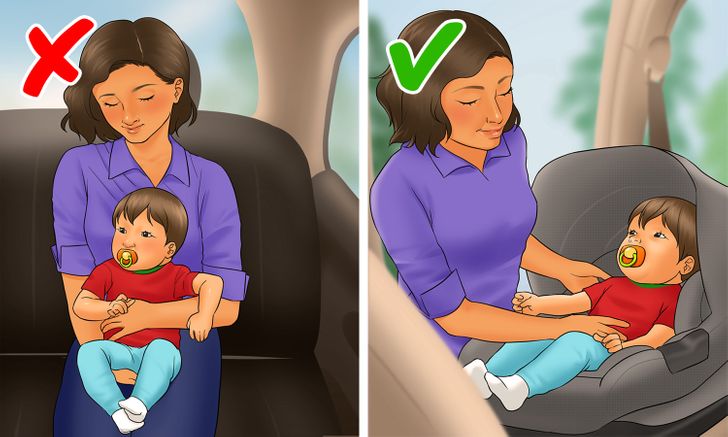
Before buying a car seat, you should make sure that it’s suitable for your child’s weight, age, and height, and that it complies with the traffic regulations enforced in your country or region.
It’s also important to make sure that it’s compatible with your vehicle, considering the size of the seats, its anchorage system, and that, when installed, it allows all other passengers to travel safely and comfortably.
Remember that no matter how short the trip may be, children should always ride in their seat and never in the arms of another person.
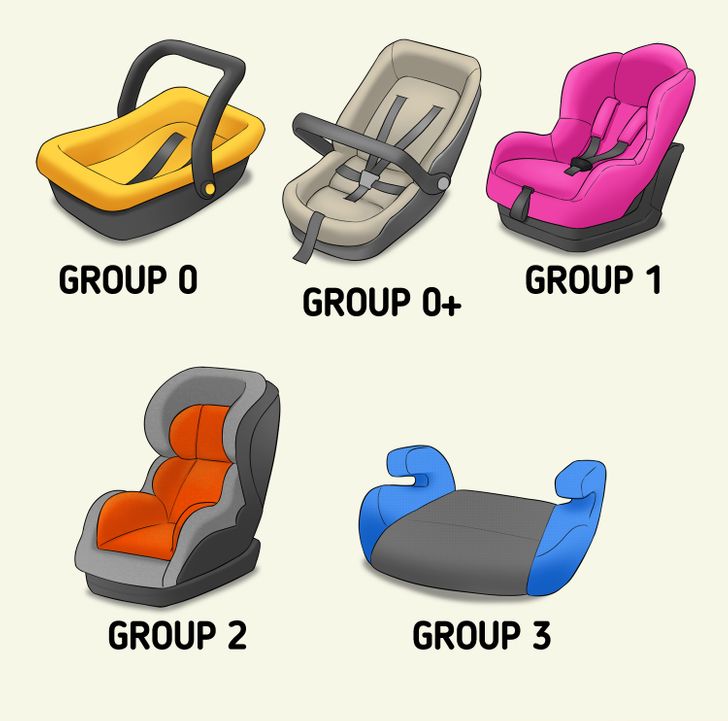
Although it may depend on the manufacturer, the types of seats you’ll find on the market today are generally among the following:
- Group 0: They are used for newborns up to babies of approximately 22 lb or 10 kg (0 to 9 months). They are recommended for infants with specific needs, where it is necessary for them to lie down.
- Group 0+: It consists of chairs or baskets for newborns up to babies of 29 lb or 13 kg (0 to 12-15 months). They have harnesses and cushions that can be adjusted. They must be installed in the opposite direction to the direction of travel.
- Group 1: They are used for babies from 20 to 40 lb or 9 to 18 kg (9 months to 4 years). They have their own belts, and some of them can be installed facing forward or in the opposite direction.
- Group 2: These are seats with backrests for children from 33 to 55 lb or 15 to 25 kg (4 to 6 years). They are installed in the front direction, fastening the child with the car seat belt.
- Group 3: They consist of booster cushions or booster seats used for children from 48 to 80 lb or 22 to 36 kg (6 to 11 years). They allow the child to grow taller and travel with the car seat belt.
Although buying second-hand items can help you save some money, it isn’t recommended to buy seats whose history is unknown. This is because they may have been in some kind of accident or have been in use for a long time, which could affect their efficiency.
2. Remove bulky jackets or coats.
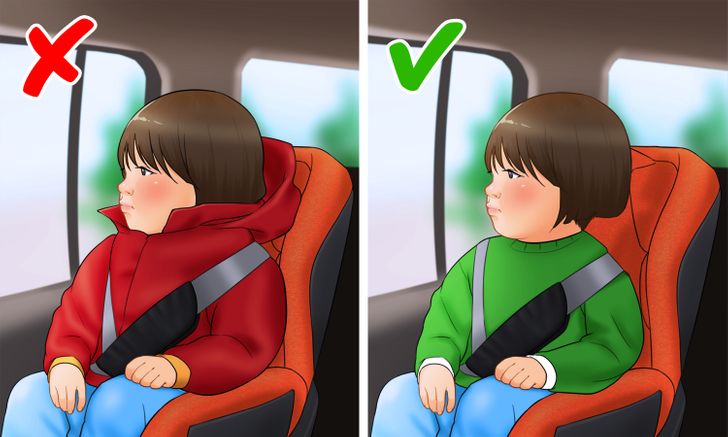
It’s very important to remove any clothing that can increase the distance between the child’s body and the harness when placing the child in the seat, as this may prevent the child from being properly secured to the seat. If temperatures are very low, you can place a blanket over the child’s head after having correctly adjusted the seat belt.
3. Never leave children alone.
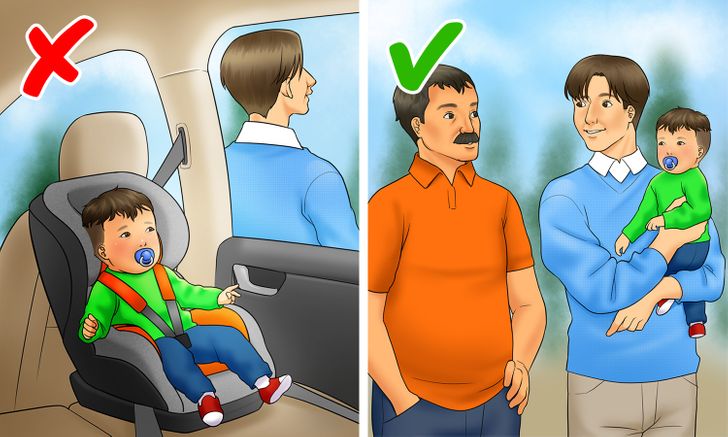
In order to avoid accidents, such as a heat stroke, be sure to always keep an eye on the children, whether they’re inside or outside the car, no matter how short a stop it is or what the weather conditions are. Cars can heat up quickly inside, reaching very high temperatures.
When the vehicle is not being used, don’t let children play inside. Lock the doors and always leave the keys out of reach.
4. Use the security systems.
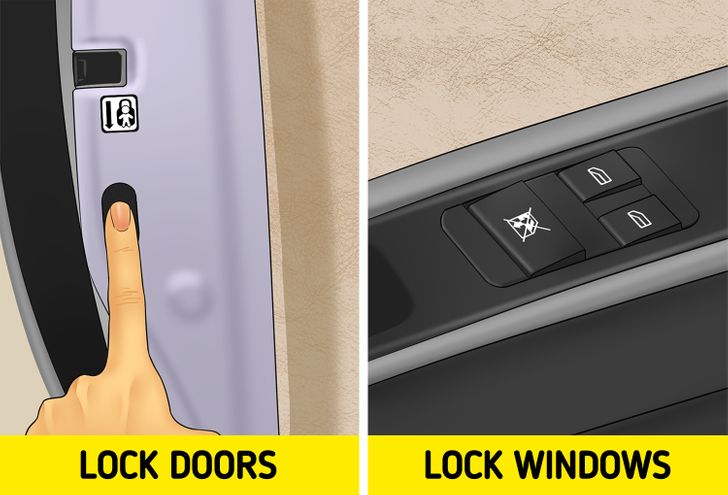
Check your car’s manual to find out where the safety systems built into your car are located and how they work. These can prevent children from opening doors and windows while the vehicle is moving or stopped, avoiding falls or limb entrapment.
In the case of doors, these locks can generally be activated or deactivated when the doors are open, preventing them from being opened from inside the car.
On the other hand, cars with automatic windows usually have a button near the steering wheel. When pressed, only the driver can lower or raise the windows.
5. Avoid food and snacks.
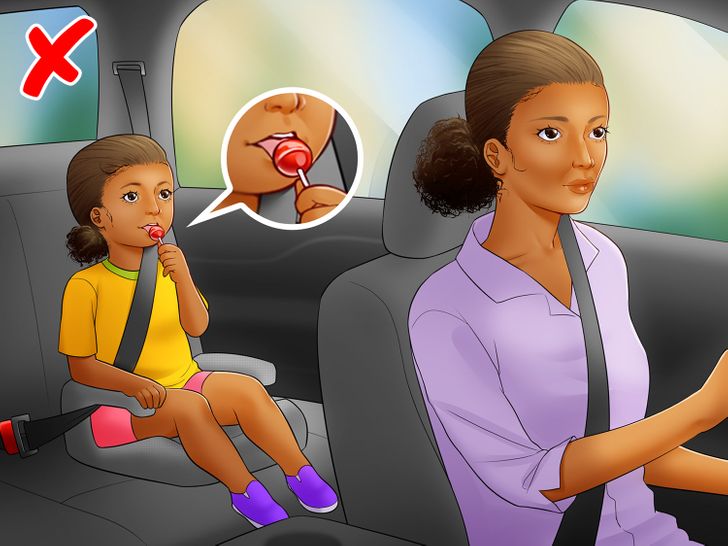
Experts recommend that children should not consume food inside the car while in motion. This is because the possibility of stopping the vehicle and helping your child in the event of choking becomes very complex.
At the same time, there are times when it can be difficult to realize that a child is choking since, due to the lack of air, they are not able to produce sounds that would alert you.
6. Do not transport loose objects.
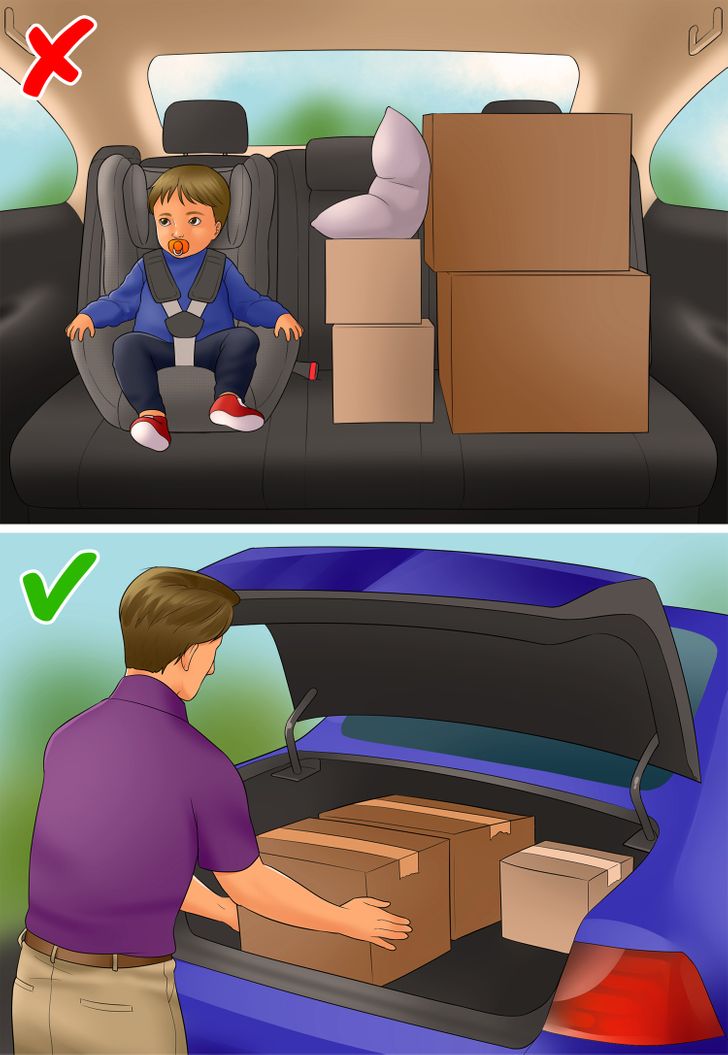
To avoid the risk of injury in sudden braking or collisions, always keep all loose items in the glove compartment or trunk. This will also prevent the child from putting small objects in his or her mouth. At the same time, it’s advisable not to place heavy things on the shelf located at the back of the seat, as these could fall on the passengers.
If you travel with pets, carry them with a harness or in a transport cage that can be adjusted to the seat belt.
7. Keep conversations short during the trip.
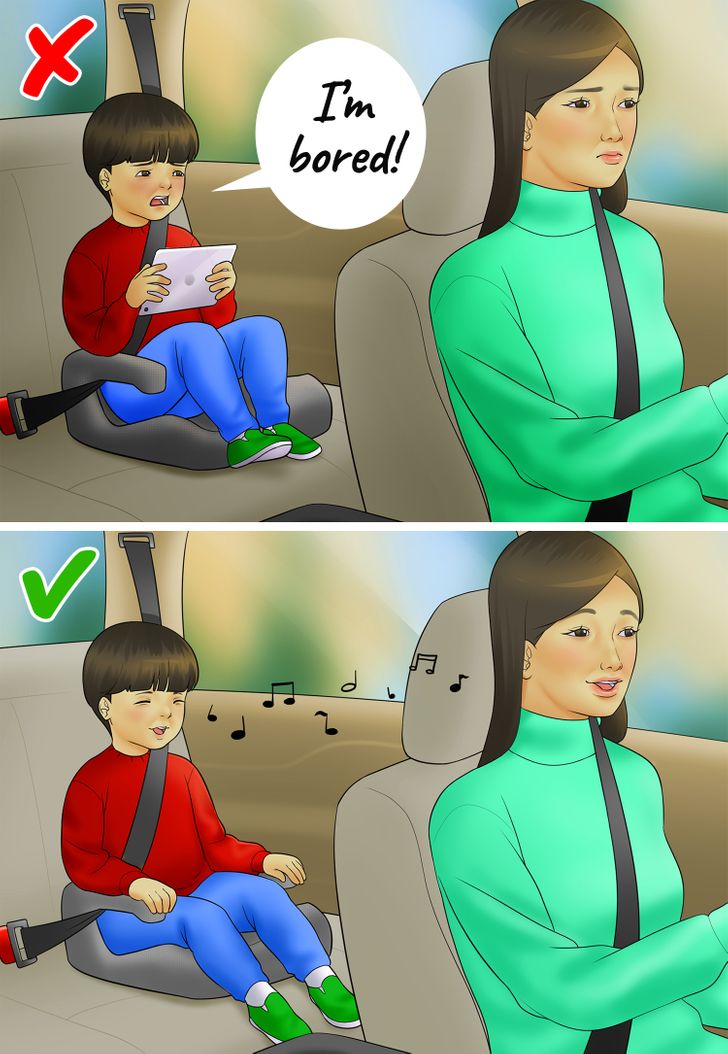
It’s important for children to understand that they should behave calmly in the car, as shouting or other actions can be distracting to the driver. For this reason, short conversations can be very effective in keeping them entertained and supervised.
Discussing the surroundings, talking about the places you’re about to visit, or playing fun games will help you to have a calm and enjoyable trip. At the same time, this will prevent motion sickness caused by the use of cell phones or tablets.